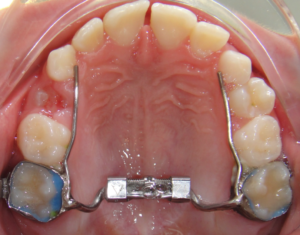It's an Emergency!
March 26th, 2024
At Kennell Orthodontics, we know orthodontic emergencies are never convenient nor timely. If you are a patient of Dr. Kennell's orthodontic office, he and his team are committed to your dental health and are more than willing to see you after hours or over the weekend. As a general rule, you should call the office when you experience severe pain. We’ll be able to schedule an appointment to resolve the problem as soon as possible. If you have a orthodontic emergency after regular office hours, you can still give us a call. If you are calling us after hours, please follow the emergency prompts to learn how you may be able to solve the problem yourself, or, if you cannot, how to contact Dr. Kennell and team. Someone is always on call and will be able to get back to you as soon as they can.

Tooth soreness is to be expected after getting braces or Invisalign treatment, this would not count as an emergency as it will take a few days to get used to them. Some things that help are sticking to a softer food diet (ex: ice cream, mashed potatoes, mac & cheese, etc). Taking Advil or Tylenol can help relieve the soreness as well. If your gums are irritated, using a warm saltwater rinse can help with healing. At our office, we provide wax to put on your braces to help protect your lips and cheeks from any other irritation as your mouth gets used to having them on.
You might be surprised to learn that you may be able to temporarily solve many problems yourself until you visit our office.
Common emergencies include:
-Broken Braces (If still attached to wire, you can leave it be or add wax if it's irritating you. This is not urgent unless it is causing persistent pain)
-Broken Wires (If it is poking you can try to put wax on it or use the end of a pencil eraser to protect your lips/cheeks. If it is not poking, you can leave it be and give us a call)
-Tie has come off of a Brace (This is not an urgent emergency, it can be fixed at your next appointment, but if you call and let us know we can fix it easily)
-Loss of a Separator (Give us a call, if it is close enough to the next appointment it should be okay, but if not, we will schedule you to come in and get it replaced)
-Wire Poking (At the beginning of treatment the wires tend to get long. You are welcome to try and clip the wire yourself with CLEAN nail clippers, or any sharp pliers that are small enough to fit in the mouth. You can try to cover it with wax, or a pencil eraser for the mean time)
To conclude, it doesn't hurt to give us a call if you are having concerns, but hopefully after reading this you can be alleviated that not all of your emergencies are URGENT!












